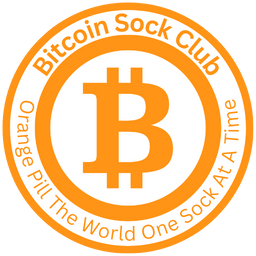- Orange Pill Media Newsletter
- Posts
- The State Of The Federal Reserve
The State Of The Federal Reserve
Is the Federal Reserve Losing power?
The United States Federal Reserve, also known as the Fed, is the central banking system of the United States. Its actions are driven to assist in the longevity of the United States financial economy, with its main purpose being to promote maximum employment, stable prices, and moderate long-term interest rates. The Fed has been in operation for over 100 years since its founding in 1913 and operates as a private institution. During this time, it has undergone many changes to adapt to the changing economic landscape, especially in recent years, which leads us to the central point of today's article. Has the United States Federal Reserve become insolvent? To answer this, we first must cover a few key questions.
Does the Federal Reserve make money?
a. Yes, the Federal Reserve makes money, but it operates as a non-profit, so its income after expenses is sent to the U.S. Treasury.
How does the Federal Reserve make money?
a. One of its primary sources of income is the interest earned on the securities it holds, such as Treasury bonds and mortgage-backed securities. The Federal Reserve essentially prints money and loans this newly printed money to the federal government in the form of Treasury Bonds. The Fed then has the ability to gauge the interest on these Treasury Bonds, which is known as monetizing debt. When the Fed elects to keep interest rates low, it is electing to produce low-yielding debt… or ineffectively monetize its debt.
With the above stated, during an economic crisis, the Fed has the ability to stimulate or inject capital into the economy by printing money and loaning it to the government at very low interest rates. This is exactly what happened during the 2008 crisis and in 2020. While many argue that this is needed to prevent disastrous economic drawdowns, if it is done in excess, it leads to increased inflation, decreased value in the dollar, and insane amounts of U.S. Government debt. This is exactly what happened from 2008 through mid-2018 and again in 2020. In summary, the Federal Reserve created trillions of dollars worth of low-yielding Treasury bonds, making it the largest holder of US government debt, with virtually no return.
How it started vs how it's going
— Lyn Alden (@LynAldenContact)
4:08 PM • Mar 4, 2023
But how does this lead to the Federal Reserve becoming insolvent?
While the above simplifies the perspective of the yield made from the Treasury bonds, the Fed still has operating expenses, and it must pay interest on its liabilities, such as bank reserves and currency in circulation (this only increases as the Fed continues to print money). This means that the liabilities or costs of operations will soon outpace the income made from the assets owned by the Federal Reserve.

What does this mean for the economy?
While the U.S. dollar acts as the center function of global economics, the Federal Reserve's solvency is necessary and incredibly crucial for maintaining confidence in the US dollar and the US government's ability to manage the economy. If the world starts to question the ability and strength of the U.S. dollar, we may see countries collaborate towards a new currency to operate as a center function for global economics. Such as Bitcoin or Brazil, Russia, India, China and South Africa’s work towards building BRICS, a Gold backed global currency.
In summary, there are some solutions to the Federal Reserve's insolvency at question, but as this trend continues, it is obvious the world's need for Bitcoin only increases… So lets Orange Pill The World.
Sponsored by Bitcoin Sock Club

Reply